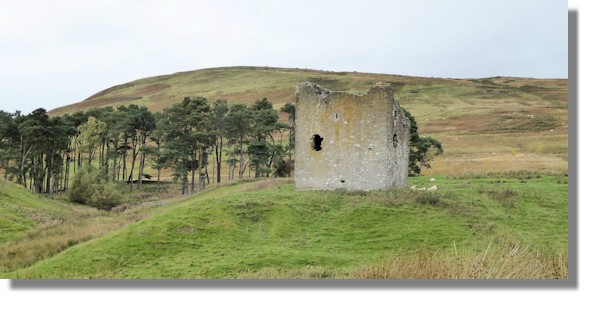

Places to Visit in Scotland
History of Dryhope Tower
A statute of the Parliament of Scotland in 1535 required large landholders in the Border area of Scotland had to build to build barmkins (a form of medieval and later defensive enclosure, typically found around smaller castles, tower houses and peel towers which contained ancillary buildings which could be used to protect cattle during raids, particularly by English invaders from the south) Made of stone and lime they were sixty square feet in area and with thick walls 4 feet 6 inches to 5 feet) for defence. Dryhope Tower was one of these in the valley of the Yarrow Water, in the historic county of Selkirkshire (now part of the Scottish Borders). It is approximately equidistant between the burghs of Moffat and Selkirk, and defended the north eastern end of St Mary's Loch. The site itself was protected on two sides, to the east by the Dryhope Burn and to the west by the Kirkstead Burn. Dryhope Tower was originally a four storey building, with the first two storeys of vaulted construction.
The castle belonged to the Scotts of Dryhope. A daughter of the House, Mary Scott (known as the "Flower of Yarrow" and was also an ancestor of Sir Walter Scott, the writer) was given in marriage to Wat Scott of Kirkhope, a notorious Border Reiver. The property passed to Wat Scott's family, the Scotts of Harden, and Scott took possession of Dryhope following his marriage. However, in 1592, Wat Scott fell out of favour with King James VI due to his association with Francis Stewart, 1st Earl of Bothwell. King James levied an army and proceeded through the forest and destroyed many houses of his opponents. Wat Scott did not get off lightly and Dryhope was amongst Scott of Harden's properties that were destroyed. But the tower seems to have been rebuilt by 1613. The castle then fell into terminal decay in the latter part of the 17th century and was acquired by the senior branch of the Scotts, the Dukes of Buccleuch.
Dryhope Today
There is no visible signs of the "barmkin" or external defensive walls but the tower itself has had a considerable amount of restoration work in recent years paid for by the Buccleuch Estate. As a result of this work it is possible to enter the tower, climb a new metal spiral staircase and reach the top of the tower. to get a view over the countryside
Getting There
Dryhope Tower is near St Mary's Loch, the largest natural loch in the Scottish Borders (well worth a visit - there is a sign-posted walk round the shores). Just north of the loch on the A708 from Moffat to Selkirk, there is a sign to Dryhope Farm. There is a track from the main road to the farm that continues a short distance into the hills. The Dryhope Burn in a deep ravine but a bridge has been built across it to the other side. There is a steep track down to the bridge - I was there after a dry spell so it wasn't too bad a climb!
The gate into the tower (see graphic at the top right) can be opened but needs a strong pull (sheep and wild animals are clearly not wanted inside). Thereafter there is a spiral staircase to the roof - and those views from the top. In the corner of the roof are the remains of a shelter for a watchman and a shelf for his lamp when it was dark.
Return to Index of Places to Visit
Where else would you like to go in Scotland?

